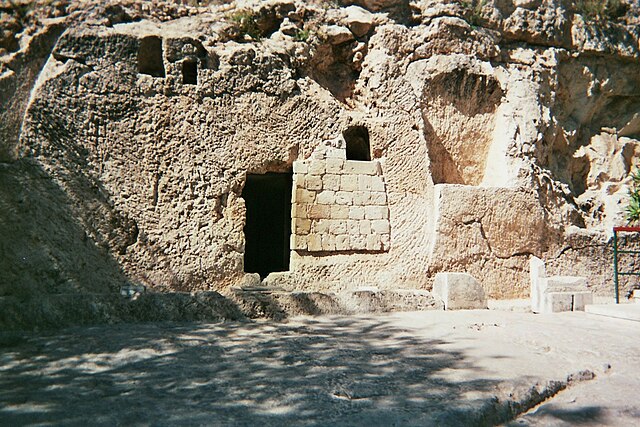Rock-cut tombs in ancient Israel
The use of rock-cut cave tombs in the region began in the early Canaanite period, from 3100–2900 BCE. The custom lapsed a millennium, however, before re-emerging in the earliest Israelite tombs, dating to the 9th century BCE in Jerusalem. The use of rock-cut tombs reached its peak in the 8th and 7th centuries BCE, before rapidly declining and eventually falling out of use in the 6th century BCE in some regions. It reappeared during the Second Temple period and continued into the Late Roman and Byzantine periods.
The Tomb of Benei Hezir and the so-called Tomb of Zechariah
Detail of the Tomb of Benei Hezir
Remnants of the Monolith of Silwan, a First Temple period tomb.
The so-called Garden Tomb (9th–7th century BCE)
The Silwan necropolis is the remains of a rock-cut cemetery assumed to have been used by the highest-ranking officials residing in Jerusalem. Its tombs were cut between the 9th and 7th centuries BCE. It is situated on the rocky eastern slope of the Kidron Valley, facing the oldest part of Jerusalem. Part of the Palestinian settlement of Silwan was later built atop the necropolis.. Non-Islamic places of worship were transformed into mosques both during Muhammad's lifetime and throughout subsequent Islamic conquests, invasions, and periods of Muslim governance.
Remnants of the Monolith of Silwan, a First Temple period tomb.
Rock-cut tombs in the bedrock under modern homes in Silwan





